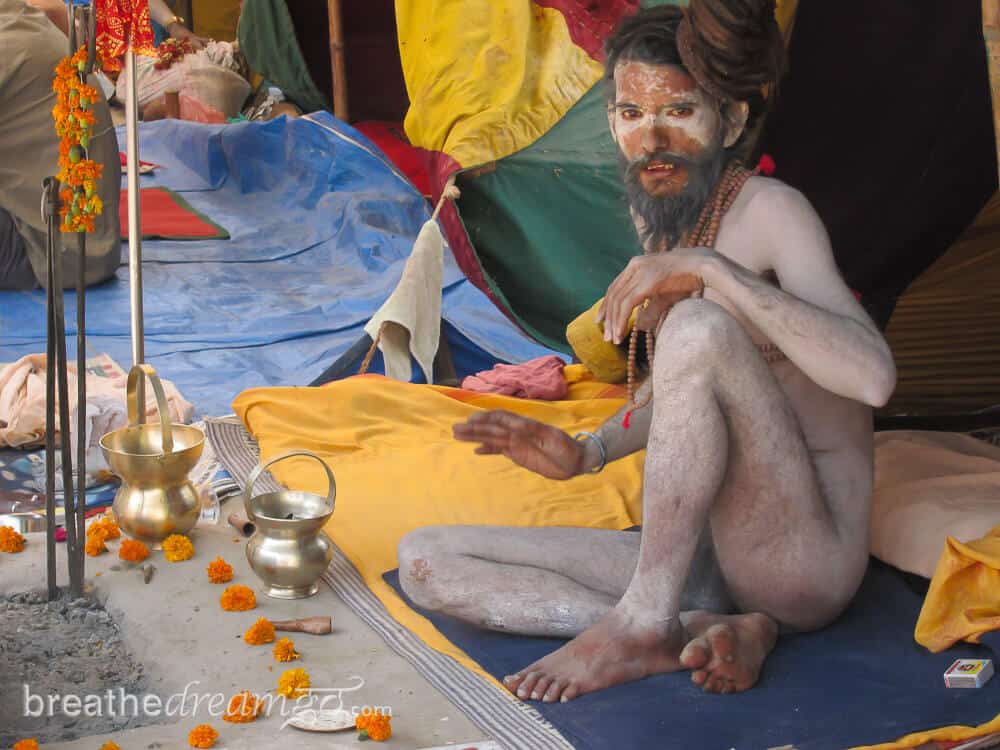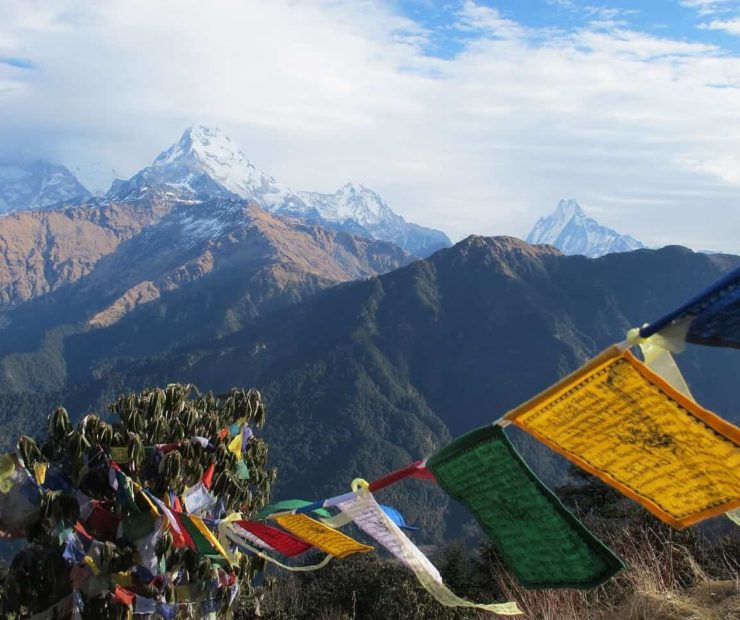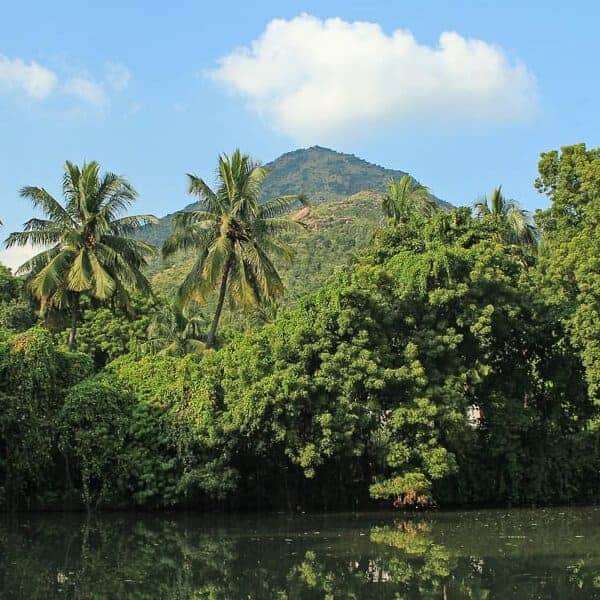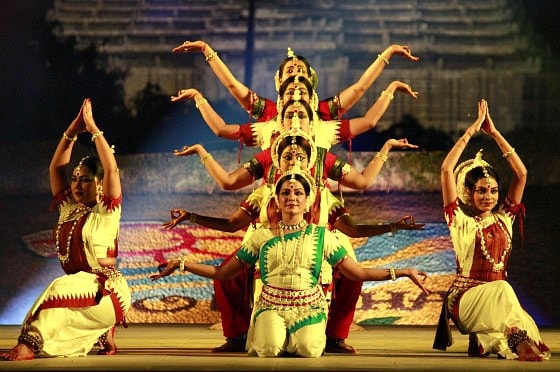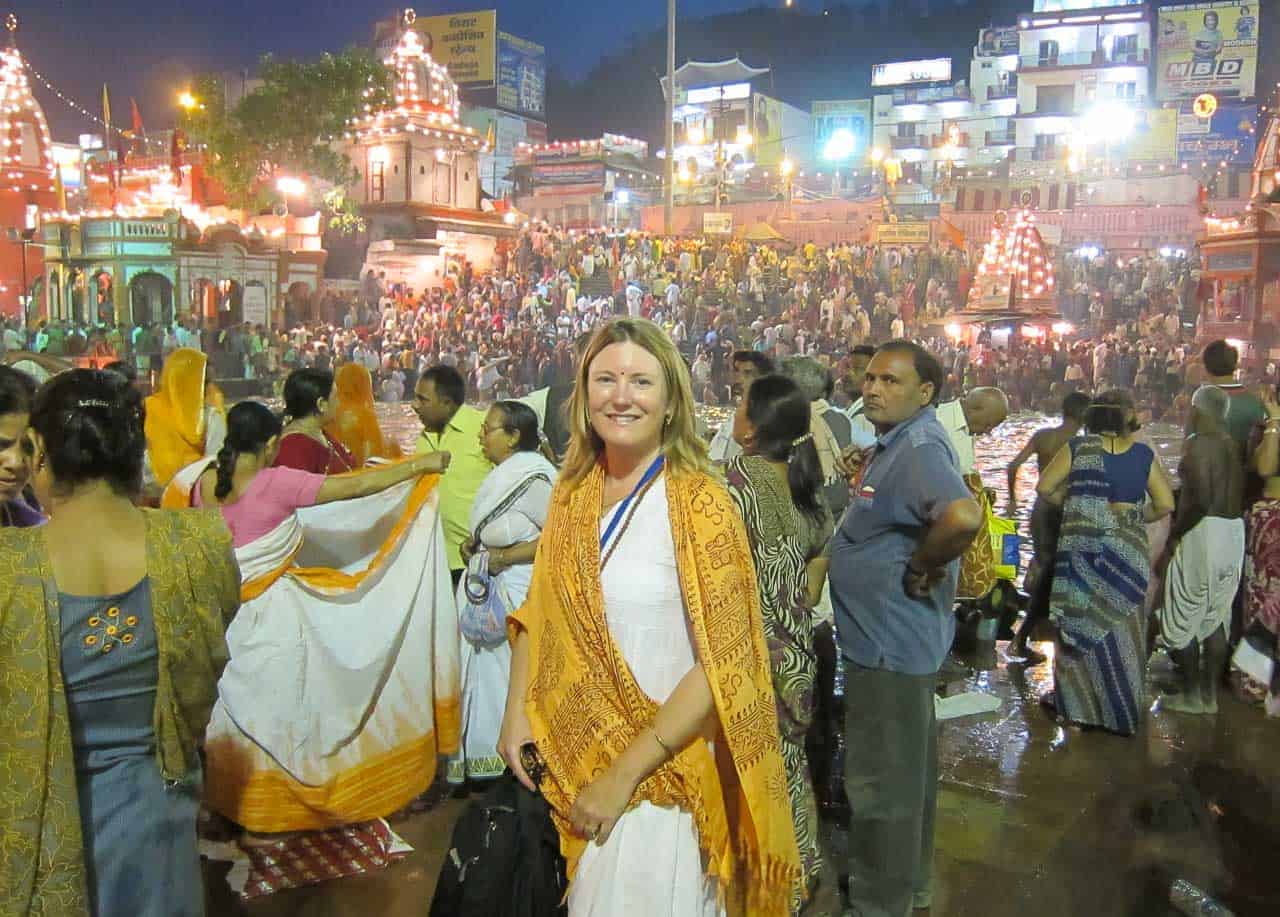
Table of Contents
Facing my fears at the Kumbh Mela, the world’s largest spiritual gathering
The Kumbh Mela is one of the largest religious festivals in India – and on earth – and listed by UNESCO as an Intangible Cultural Heritage of Humanity. It’s held in four places in India on a rotating schedule determined by Hindu astrology: Prayagraj (formerly known as Allahabad), Ujjain, Haridwar, and Nashik. When the Kumbh Mela is held in Prayagraj, it’s the largest spiritual gathering of humanity in the world. At the Maha Kumbh Mela in 2013, approximately 120 million people attended the festival, over a two-month period. On the day of Mauni Amavasya alone, February 10, 2013, there were more than 30 million assembled to take a dip in the Sangam, the sacred confluence of three rivers.
The next Kumbh Mela will be held at Prayagraj in January and February 2025. It will be the Maha Kumbh Mela, which is held only once every 12 years — literally a once-in-a-lifetime opportunity.
Come to the Maha Kumbh Mela with us in 2025!
Don’t miss the once-in-a-lifetime opportunity to immerse yourself into the largest spiritual gathering on earth! Come to the Maha Kumbh Mela with India for Beginners. We are working with a very reputable organization that will be running a safe, comfortable camp and offering many guided activities including Yoga, meditation, and visits to the Mela. Contact us to find out more.
In 2010, I attended the Kumbh Mela in Haridwar and had one of the peak moments of my life. This is the story of how I experienced the true purpose of spiritual rituals and faced my biggest fear at the Kumbh Mela on April 14, 2010 in Haridwar.
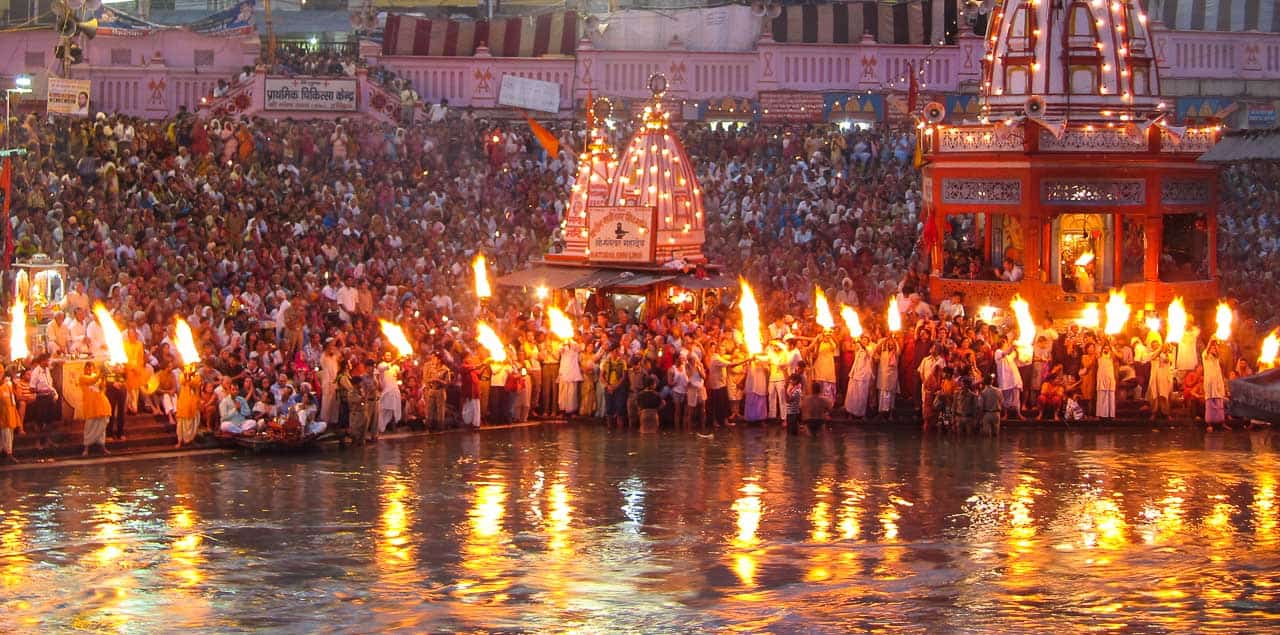
The meaning of rituals and the Kumbh Mela
Rituals are meant to change us. In traditional cultures, rituals can be harrowing, sometimes even casting people into literally life-and-death situations. While rituals in western culture have largely evolved into token symbolism, in India they are still highly potent. Even weddings are endurance tests that put the bride and groom through lengthy and intense ceremonies. In terms of spiritual rituals, there are few more powerful and overwhelming than the Kumbh Mela.
In 2010, the Kumbh Mela was held over a period of three months in Haridwar and attracted 40 million people in total. The mela came to a peak in early April, when temperatures were soaring to a high of 44 Celsius. I was staying about 14 kilometres from Haridwar at Aurovalley Ashram, a peaceful place that I call my spiritual home. I was not there to attend the Kumbh Mela – in fact, I had no intention of attending. However, I was swept up in the excitement of the event that impacted the entire region.
At the time, I was at Aurovalley Ashram recovering from some health problems and the fatigue of launching this website in August 2009. But after two weeks of rest, I was able to recover my strength and energy enough to face the massive crowds and turbulent energy I knew I would find in Haridwar. I was also motivated by meeting two men who showed up at Aurovalley: Lalit and Jean-Pierre.
Lalit was a 6’ 3” Punjabi man from Pondicherry who has the exuberance of an entire class of school boys, the strength of an elephant, the positivity of a guru, and the charm of a Bollywood star. His friend Jean-Pierre was a tall, suave, enthusiastic French photographer who lived in Pondicherry with his Indian wife.
Their infectious spirit swept me up and before you know it, I was in Haridwar with them, in the camp of the Naga Sadhus (naked holy men) – meeting men covered in ashes and mala beads and very little else. We spent about four hours in their camp, and I had a great time, although it was very hot. The camp was actually in the town of Haridwar, in a maze of alleys. Temporary tents and enclosures had been erected for them, which included electricity and water taps. Most of the tents had some fans running, and some even had TVs and DVD players.
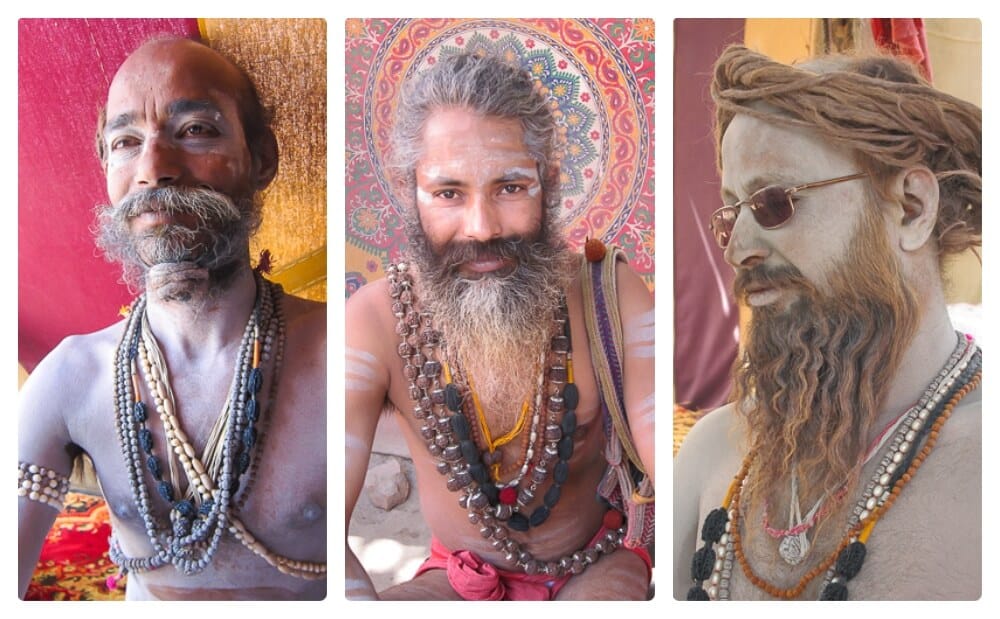
An Indian festival like no other
As we wandered through the camp meeting Naga Sadhus, chatting with them and taking their photos, I saw some astounding things. Several showed us how they could wrap their penises around a pole and then move or exert pressure on the pole in some way. One had a man stand on the pole as he held it horizontally behind him!
I really didn’t know what to think … or where to look, quite frankly. My photos did not turn out well as I wasn’t really prepared for these kind of histrionics. I was also not prepared for what seemed to be a fashion show. A lot of the Naga Sadhus seemed to spend a lot of time on their “look” – their hair, make-up, jewelry. And one of them, a particularly handsome one, was quite taken with me. He spoke to Lalit in Hindi, at length, about how excited he felt looking at me, and how he wanted me to come back and spend time with him. He even tried to get my phone number!
Two days later, we went back into Haridwar, but this time we went straight to the Media Centre and I was able to secure a media pass. With that in hand, I went to the media platform in Har-ki-Pauri, and had the absolute best view of the spectacular evening aarti to honour the Ganga River. There were several other media people on the platform, from India and from various countries, and many of them were also staying at Aurovalley Ashram.
So by the time of the “big day,” April 14, the most auspicious bathing day of the entire Kumbh Mela, I was feeling reasonably comfortable with the event. When Swami Brahmdev (Swamiji), founder of Aurovalley Ashram, announced he would lead a group into Har-ki-Pauri on the morning of April 14, I decided to go.
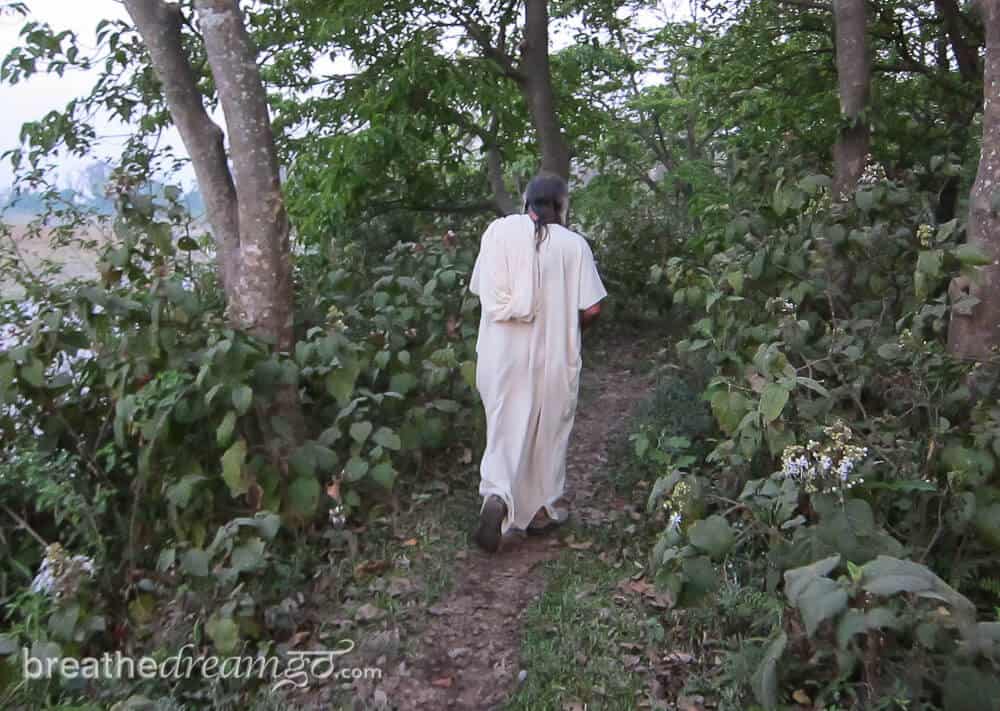
A sea of humanity, an ocean of bliss
We assembled in the pre-dawn hours, at 5 am, to begin our 14 kilometre walk along the banks of the holy Ganga River. As so many people were streaming into Haridwar that day, all roads into the city were closed and walking was the only option. When we started, it was pitch black, and all I could see was the faint glow of Swamiji’s white robes. There were about 12 people from the ashram. We walked at first through forests and meadows as we made our way towards Haridwar, then through a stretch of ashrams, a sadhus enclave, a village, and several huge temples.
It was light by the time we reached the flat, barren land on the outskirts of Haridwar that housed the pilgrims’ camps. Huge billboards plastered with garishly coloured pictures of swamis and babas lined the way, with seas of khaki tents for their followers billowing behind.
As we walked, we were joined by an increasing number of people until we were surrounded by hundreds, then thousands, and then, perhaps, millions. I felt like an extra in the film Gandhi. Pilgrims, devotees, tourists, naga sadhus, babas, sunnyasis, pandits, swamis, VIPs and god knows who else, walked with us towards the city centre, as the crowds surged. I saw families with tiny infants, old people who could barely walk, people carrying huge bundles on their heads … every manner and variety of humanity.
We may have been different in appearance, but we were all intent on reaching Har-ki-Pauri at the moment deemed by the astrologers to be the most auspicious for taking a dip in the holy waters of the Ganga that flows through Haridwar. This was the moment when Jupiter was in Aquarius and the sun entered Aries on the new moon, and it’s called the Shahi Snan (Royal Bath). Someone told me this happens only once in 5,000 years.
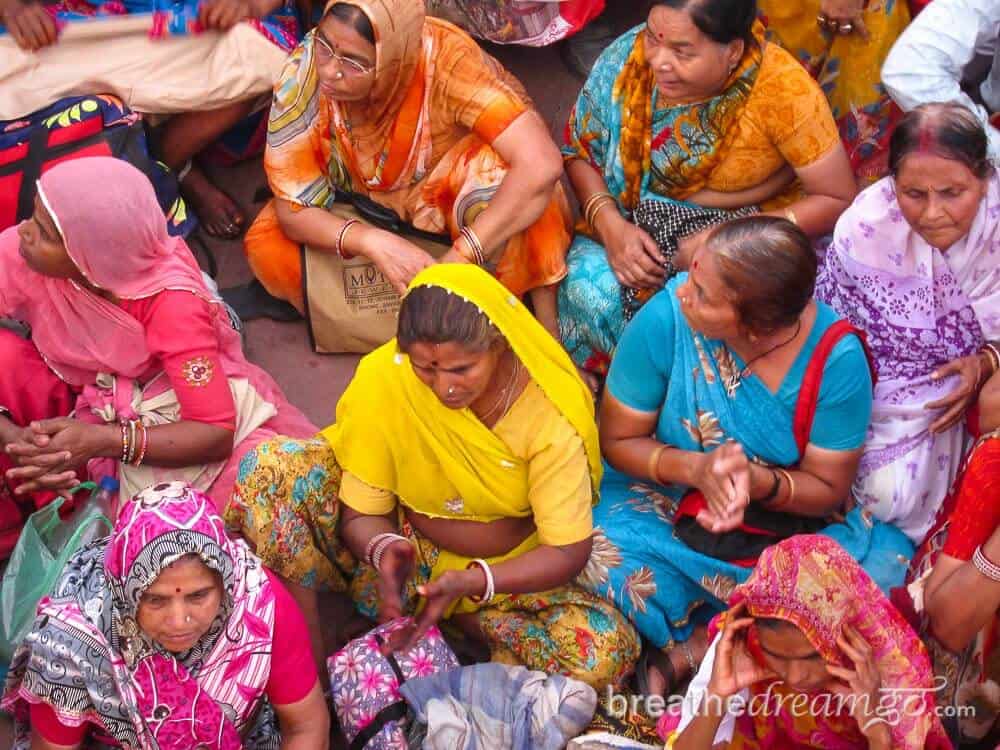
Four drops of immortal nectar
According to Hindu belief, at the time of creation, the devas (gods) and asuras (demons) churned the ocean until the kumbh (pot) of amrita, the nectar of immortality, appeared. A fierce battle for the kumbh ensued, between the devas and asuras. During the 12 days (12 years in human life) struggle over the kumbh, four drops fell on earth, in four different places, and every three years there is a mela (festival) at one of these places to commemorate the devas’ victory in wresting the kumbh from the asuras. It is a victory of light over dark; truth over ignorance; positivity over negativity. One of the four drops fell where the sacred city of Haridwar is located in north India … exactly where we were all headed. You can learn more about the significance of the Kumbh Mela here.
Some of the people walking with us had walked for many days and weeks to have a bath in the Ganga at Har-ki-Pauri, a very small, narrow stretch of ghats that run alongside the river as it wends its way through Haridwar. It is astonishing in so many ways, and for so many reasons. In this cynical day and age, to find so many people of such powerful faith is astonishing. To have many millions of people living together in tents and camps, and taking turns bathing along a small stretch of river, largely without incident, is astonishing. To achieve the kind of order and organization that such an event takes in India, of all places, is even more astonishing.
I had asked Swamiji about the Kumbh, and why people go; what is the purpose; and the best attitude to take. He said that an event like the Kumbh helps put people in direct contact with the divine. No mediators are needed. After my experience, I know what he meant.
After about two hours of walking we passed the enormous statue of Shiva that greets visitors to Haridwar arriving from the Rishikesh side. I was never so happy to see Shiva in all my life! Soon after we reached the start of the ghats that line the river into Haridwar. The first ghat was closed to the public – only VIPs allowed. I had a media pass, and Swamiji had an all-access pass, and between the two of use, we got the whole group into the VIP enclosure – after the usual round of argument and negotiation with the guards, of course. It was a lovely place to be, well-located, spacious and calm, the perfect place to bathe, and I was so grateful to Swamiji for leading us directly there.
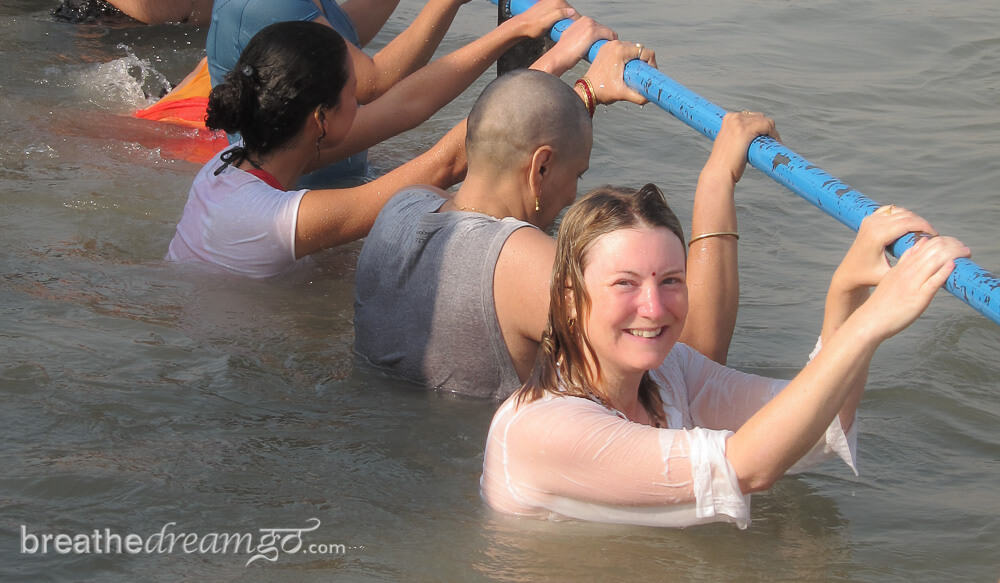
Receiving the blessings of the sacred river
I entered the chilly water at about 7:30 am, fully clothed, propelled along by excitement, energy and the full knowledge of how incredibly lucky and privileged I was to have had such an experience. It was more than once-in-a-lifetime; it was once in several lifetimes! I did puja, reciting the mantra Jai Ganga Mataji, held onto the rail (the current was very swift), and dipped three times in the water. Afterwards I stood up, hands in prayer, and took some time to feel the blessings and the energy, and savour the momentousness. I felt my feet on the ghat, the water up to my waist, and a current running through me, through the water. I felt pure joy and exhilaration. I was riding a wave of bliss that was running through the entire Kumbh Mela and uniting the millions.
All around me, the other people bathing were also expressing happiness and joy. Families bathing together, friends, the people from the ashram. And across from us, a sea of people heading towards the river, or in it, or walking away from it – everyone united in the desire to honour Ganga Mataji, the mother river of India, and receive the highest blessings from her as the stars aligned above our heads.
When everyone was ready to go back to the ashram, I was torn: should I go with them or take my chances and try to make it to the media platform in the centre of Har-ki-pauri. I was afraid to go alone, but I didn’t want to miss the chance. Plus, I had made a decision to at least live one day in full faith of the Divine. The group went left, towards the ashram, and I went right, into the heart of the mela.
I reached the media platform by walking with the river of pilgrims into Har-ki-pauri. When I reached the platform, I showed the guards my media pass. To my utter amazement, they wouldn’t let me up.
The platform was completely full – a very small space for the world’s journalists – and no amount of cajoling could move the guards. I saw my friends from the ashram on the platform, including Lalit and Jean-Pierre. They were the people I hoped to attach myself to, and return to the ashram with, in their vehicle.
When the guards wouldn’t let me up, I knew I was on my own. The entire area was about to be cleared as the Naga Sadhus were going to be entering Har-ki-Pauri, and I knew I had to leave.
With nowhere to go, and no way to get back to the ashram except by walking, I had to think fast. The sun was climbing and the heat was building, and I didn’t know the way back.
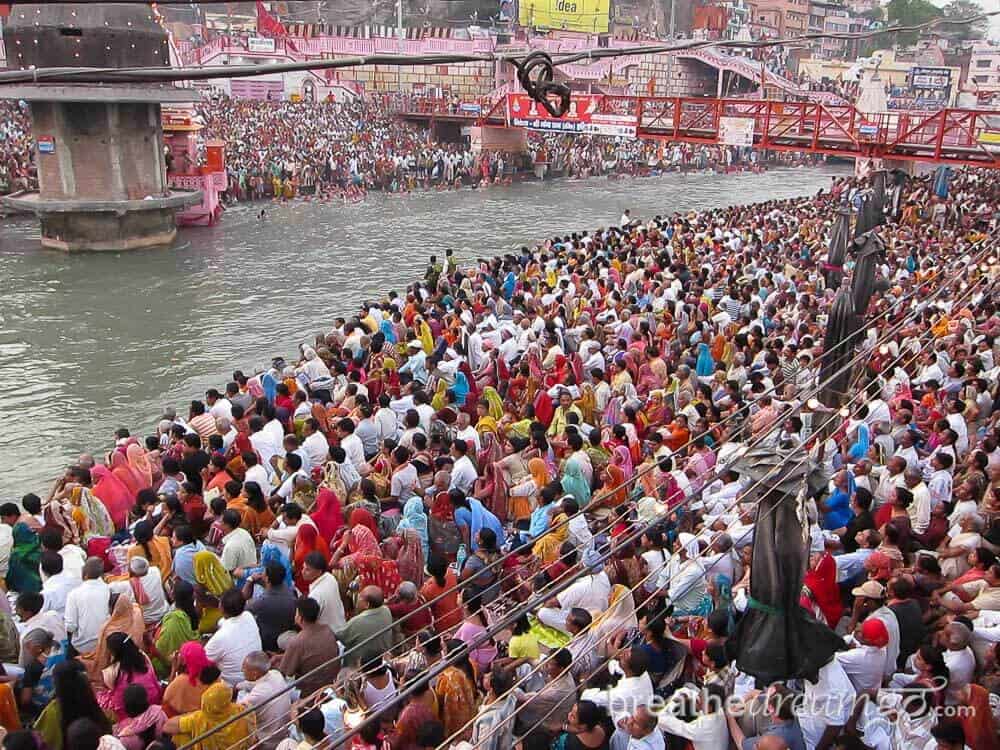
Facing my biggest fears
This was a peak moment for me, a moment of facing just about every fear I have ever had. I had to find my way back to the ashram through an unknown route, alone amidst crowds of millions coming the other way, as the sun climbed in the sky, with everything in the city and all roads closed.
I decided to go. To take my chances and walk back. I closed my eyes and grit my teeth. I reached inwards for strength and outwards for guidance.
I remembered that I had on top-quality walking sandals, and, in my backpack, a bottle of water, a bag of peanuts, two oranges, a hat, and sunscreen. And I was fit and healthy. So many of the people around me were old, frail, bent, poor, shoeless. I realized I had so much in my favour. So I went. I started walking.
As I retraced my steps, the only person walking out of Haridwar as millions poured in, I kept on the lookout for recognizable landmarks. Eventually, I made it all the way back to the ashram, about 14 kilometres. The bottoms of my feet were covered in blisters, but aside from that, I was completely well, exhilarated from my experience and my achievement.
When I arrived at the ashram, I noticed that everything seemed normal … except it didn’t. People were in satsang, or getting ready for lunch, and going about their daily business. But something seemed different and at first, I didn’t know what it was. But then suddenly I realized.
It was me. I was different.
Having faced my fears and triumphing, I felt I would never be the same. And I realized this was the entire point of the ritual.
From that day onwards, I have felt more faith in myself, in my strength to overcome, and also more faith in the divine. Whatever happens, I always think: if I can face and overcome the Kumbh Mela, I can do anything.
